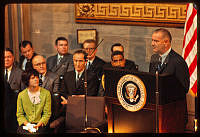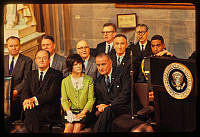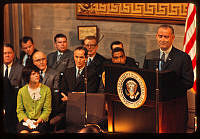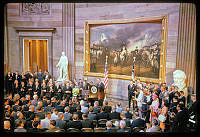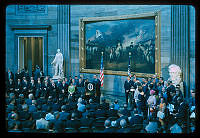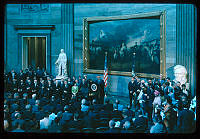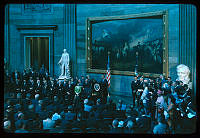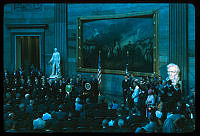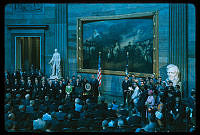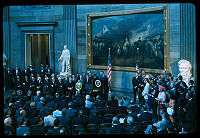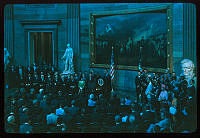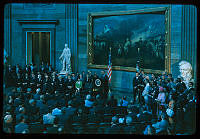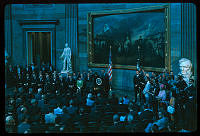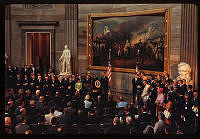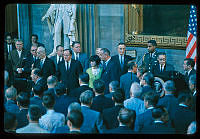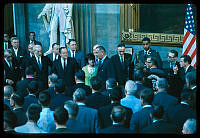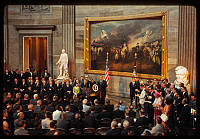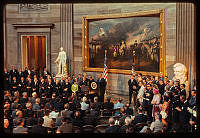President Johnson Speaks at Voting Rights Act Ceremony
This photograph is of President Lyndon B. Johnson delivering remarks in the Capitol Rotunda prior to the signing ceremony for the Voting Rights Act of 1965 which took place on August 6, 1965. The bill was signed in the President's Room. The Voting Rights Act was designed to the "enforce the 15th amendment" and remove the barriers that prevented African Americans from exercising their right to vote. The statue's provisions included: banning literacy tests, empowering the attorney general to investigate the unlawful use of poll taxes, and made the act of harassing, intimidating, threatening to prevent a lawfully registered voter from voting punishable by a fine of up $10,000, a five-year prison sentence or both. The legislation also allowed for the appointment of federal examiners with the ability to register qualified citizens to vote in jurisdictions where less than 50 percent of the voting age population was registered to vote. This legislation had a tremendous and immediate impact with over a quarter-million African Americans registered to vote by the end of 1965.




